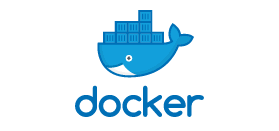Set up a RabbitMQ cluster-Docker Compose with this quick guide. Our Docker support team is always here to help you.
How to Set Up RabbitMQ Cluster-Docker Compose
If you’re searching for a quick and practical guide to set up a RabbitMQ cluster docker-compose environment, you’re in the right place. This post provides a  compact and actionable breakdown of how RabbitMQ works, its components, and why it’s used, along with a simple guide to set up a clustered environment using Docker Compose. No fluff. Just the essentials.
compact and actionable breakdown of how RabbitMQ works, its components, and why it’s used, along with a simple guide to set up a clustered environment using Docker Compose. No fluff. Just the essentials.
An Overview
What Is RabbitMQ?
RabbitMQ is the most widely used open-source message broker developed by Pivotal Tracker. Built using Erlang, RabbitMQ fits perfectly into any microservices architecture thanks to its support for multiple protocols, including:
- AMQP
- HTTP
- STOMP
- MQTT
How RabbitMQ Works
RabbitMQ uses an Exchange system to route messages to the appropriate Queue. There are four exchange types:
- Direct Exchange: Sends the message directly to a queue using a routing key.
- Fanout Exchange: Broadcasts to all queues bound with the same routing key.
- Topic Exchange: Routes messages to queues based on routing patterns.
- Headers Exchange: Uses headers (similar to HTTP headers) to determine routing.
RabbitMQ Components
Here are the four core components of RabbitMQ:
- Producer: Sends messages to a queue.
- Exchange: Handles routing messages to the appropriate queue.
- Queue: Stores messages bound to exchanges via binding keys.
- Consumer: Reads messages from a queue.
Why Use RabbitMQ?
In monolithic architecture, a single point of failure and scalability bottlenecks are common. RabbitMQ, used in microservices environments, helps eliminate these issues:
- Promotes decoupling of application components
- Enables language-agnostic communication
- Enhances Single Responsibility Principle
- Allows scalable and flexible development
This makes RabbitMQ an excellent fit for evolving systems.
Setting Up RabbitMQ Cluster
Here’s how you can spin up a RabbitMQ cluster docker-compose environment:
version: "3.8"
services:
rabbit1:
image: rabbitmq:3.12-management
hostname: rabbit1
container_name: rabbit1
environment:
- RABBITMQ_ERLANG_COOKIE=secretcookie
- RABBITMQ_NODENAME=rabbit@rabbit1
ports:
- "15672:15672"
- "5672:5672"
networks:
- rabbitmq_cluster
rabbit2:
image: rabbitmq:3.12-management
hostname: rabbit2
container_name: rabbit2
environment:
- RABBITMQ_ERLANG_COOKIE=secretcookie
- RABBITMQ_NODENAME=rabbit@rabbit2
networks:
- rabbitmq_cluster
depends_on:
- rabbit1
rabbit3:
image: rabbitmq:3.12-management
hostname: rabbit3
container_name: rabbit3
environment:
- RABBITMQ_ERLANG_COOKIE=secretcookie
- RABBITMQ_NODENAME=rabbit@rabbit3
networks:
- rabbitmq_cluster
depends_on:
- rabbit1
networks:
rabbitmq_cluster:
driver: bridgeOnce the containers are up, you can manually join the cluster using the following commands (run inside each container):
docker exec -it rabbit2 bash
rabbitmqctl stop_app
rabbitmqctl join_cluster rabbit@rabbit1
rabbitmqctl start_app
Repeat the same steps for rabbit3.[If needed, Our team is available 24/7 for additional assistance.]
Conclusion
A RabbitMQ setup is simple yet powerful for scaling microservices. It ensures high availability, load balancing, and flexibility across different environments. With minimal setup, you get a reliable message broker ready for production.







0 Comments